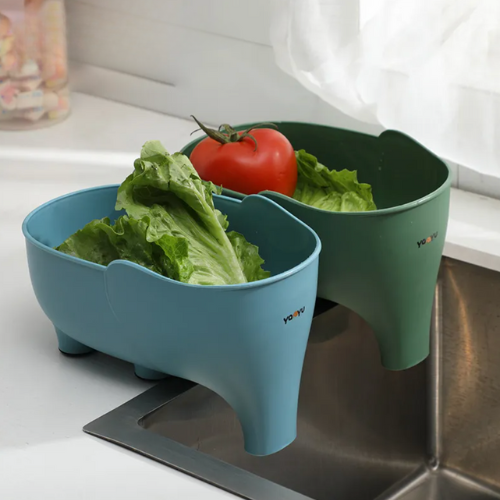The Okinawa Diet: Unlocking the Secrets to Longevity and Health
Discover the Okinawa Diet, a traditional way of eating that has been linked to longevity and health. Learn about its principles, benefits, and how to incorporate it into your life for better well-being.
The Okinawa Diet has garnered significant attention in recent years, primarily due to the extraordinary longevity and health of the residents of Okinawa, a small island in Japan. Known for having one of the highest life expectancies in the world, the people of Okinawa attribute their long lives to a unique dietary pattern that is rich in nutrients and low in calories. This article delves into the principles of the Okinawa Diet, its numerous health benefits, and practical tips on how to incorporate it into your own life.
Key Takeaways
- Overview of the Okinawa Diet: The Okinawa Diet is a traditional Japanese way of eating that emphasizes plant-based foods, particularly vegetables, sweet potatoes, and legumes. It is low in calories and rich in nutrients, contributing to the exceptional longevity and health of the Okinawan people.
- Key Principles: The diet is based on several key principles, including plant-based eating, low-calorie but nutrient-dense foods, healthy fats, mindful eating with portion control ("hara hachi bu"), and the use of medicinal herbs and spices.
- Health Benefits: The Okinawa Diet is associated with numerous health benefits, such as increased longevity, reduced risk of chronic diseases, effective weight management, improved digestion, and enhanced cognitive function.
- Incorporating the Diet: To adopt the Okinawa Diet, focus on increasing your intake of vegetables and whole grains, incorporating plant-based proteins, practicing mindful eating, and using herbs and spices for added health benefits. Regular physical activity and strong social connections are also important aspects of this lifestyle.
- Sample Meal Plan: A sample meal plan inspired by the Okinawa Diet includes sweet potato and vegetable stir-fry for breakfast, Okinawa-style soba noodles for lunch, grilled mackerel with seaweed salad for dinner, and fresh fruit with green tea as a snack.
The Okinawa Diet offers a sustainable and enjoyable approach to better health and longevity. By incorporating its principles into your daily life, you can improve your overall well-being and reduce the risk of chronic diseases.
What is the Okinawa Diet?
The Okinawa Diet is a traditional way of eating that originated in Okinawa, Japan. It is characterized by a high consumption of vegetables, particularly leafy greens, sweet potatoes, and other plant-based foods, alongside moderate amounts of fish, tofu, and seaweed. The diet is low in calories and fat but rich in complex carbohydrates, fiber, and antioxidants.
One of the most distinctive features of the Okinawa Diet is the concept of "hara hachi bu," which translates to "eat until you are 80% full." This practice encourages mindful eating and portion control, helping to prevent overeating and promoting a healthy weight.
The Historical Roots of the Okinawa Diet
The Okinawa Diet has deep historical roots, dating back centuries. Okinawa's subtropical climate allows for the cultivation of a variety of fruits and vegetables, many of which are staples in the diet. The island's isolation also meant that its residents developed a self-sustaining food culture, relying heavily on locally grown produce and seafood.
Traditionally, the diet consisted of sweet potatoes, which were the primary source of carbohydrates, along with various leafy greens, soy products, and small amounts of fish and pork. Okinawans also consumed a variety of herbs and spices, such as turmeric, which is known for its anti-inflammatory properties.
Over time, the diet evolved, but it has remained predominantly plant-based, with a strong emphasis on whole foods and minimal processed ingredients. This dietary pattern has been credited with contributing to the low rates of chronic diseases and the impressive longevity observed in the Okinawan population.
Key Principles of the Okinawa Diet
The Okinawa Diet is more than just a way of eating; it is a lifestyle that emphasizes balance, moderation, and a deep connection with nature. Here are some of the key principles that define the Okinawa Diet:
1. Plant-Based Eating
The Okinawa Diet is primarily plant-based, with vegetables, fruits, and legumes making up the bulk of the diet. Sweet potatoes, in particular, are a cornerstone of the diet, providing a rich source of complex carbohydrates, fiber, and vitamins. Other commonly consumed vegetables include bitter melon, radishes, and seaweed, all of which are packed with nutrients and antioxidants.
2. Low-Calorie, High-Nutrient Foods
Okinawans traditionally consume a low-calorie diet, but it is also incredibly nutrient-dense. The emphasis is on foods that are high in vitamins, minerals, and antioxidants while being low in calories. This approach helps to reduce the risk of obesity and related chronic diseases.
3. Healthy Fats
While the diet is low in fat overall, it does include healthy fats from sources like fish, tofu, and seaweed. Omega-3 fatty acids, found in fish like mackerel and sardines, are known for their heart-protective properties and are a key component of the Okinawa Diet.
4. Mindful Eating and Portion Control
The practice of "hara hachi bu" is central to the Okinawa Diet. This principle encourages individuals to eat slowly and stop eating when they feel about 80% full. This mindful approach to eating helps prevent overeating and promotes better digestion and weight management.
5. Incorporation of Herbs and Spices
Okinawans use a variety of herbs and spices in their cooking, many of which have medicinal properties. Turmeric, for example, is commonly used in Okinawan cuisine and is known for its anti-inflammatory and antioxidant benefits.
6. Social and Cultural Aspects
The Okinawa Diet is not just about what you eat but also how you eat. Meals are often shared with family and friends, and there is a strong emphasis on social connections and community. This sense of belonging and emotional well-being is believed to play a role in the overall health and longevity of the Okinawan people.
Health Benefits of the Okinawa Diet
The Okinawa Diet is often cited as one of the healthiest diets in the world, and for good reason. Its nutrient-rich, low-calorie nature offers numerous health benefits that contribute to the longevity and well-being of those who follow it. Here are some of the key health benefits associated with the Okinawa Diet:
1. Longevity
Okinawa is known as a "Blue Zone," a region where people live significantly longer than average. The Okinawa Diet is thought to be a major factor in this longevity. The combination of nutrient-dense foods, low calorie intake, and a focus on plant-based eating helps to protect against chronic diseases and promote long, healthy lives.
2. Reduced Risk of Chronic Diseases
The Okinawa Diet is linked to lower rates of chronic diseases, such as heart disease, diabetes, and certain cancers. The high intake of antioxidants, fiber, and healthy fats helps to reduce inflammation, improve heart health, and regulate blood sugar levels.
3. Weight Management
The Okinawa Diet’s focus on low-calorie, high-nutrient foods, along with the practice of mindful eating, makes it an effective approach to weight management. By eating until 80% full and choosing nutrient-dense foods, individuals can maintain a healthy weight without feeling deprived.
4. Improved Digestion
The high fiber content of the Okinawa Diet supports healthy digestion and regular bowel movements. Fiber-rich foods like sweet potatoes, vegetables, and legumes help to promote gut health and prevent constipation.
5. Enhanced Cognitive Function
The Okinawa Diet’s emphasis on whole foods, healthy fats, and antioxidants is believed to support brain health and cognitive function. Omega-3 fatty acids, in particular, are known to protect against cognitive decline and support overall brain health.
How To Incorporate the Okinawa Diet into Your Life?
Incorporating the Okinawa Diet into your life doesn’t have to be complicated. Here are some practical tips to help you get started:
1. Increase Your Vegetable Intake
Make vegetables the star of your meals. Aim to fill at least half of your plate with a variety of colorful vegetables, such as leafy greens, sweet potatoes, carrots, and radishes. Experiment with new vegetables and cooking methods to keep things interesting.
2. Choose Whole Grains and Complex Carbohydrates
Opt for whole grains and complex carbohydrates like brown rice, quinoa, and sweet potatoes. These foods provide sustained energy, fiber, and essential nutrients. Replace refined grains with whole grains to align with the principles of the Okinawa Diet.
3. Incorporate Plant-Based Proteins
Include plant-based proteins like tofu, tempeh, and legumes in your meals. These foods are rich in protein, fiber, and essential amino acids, making them a valuable addition to your diet. If you eat animal products, choose lean sources like fish and limit red meat consumption.
4. Practice Mindful Eating
Adopt the practice of "hara hachi bu" by eating slowly and stopping when you feel 80% full. This mindful approach to eating can help you better recognize your hunger and fullness cues, preventing overeating and promoting healthy digestion.
5. Use Herbs and Spices
Enhance your meals with herbs and spices like turmeric, ginger, and garlic. Not only do these add flavor to your dishes, but they also offer a range of health benefits, from reducing inflammation to boosting immunity.
6. Stay Active and Engaged
The Okinawa Diet is part of a larger lifestyle that includes regular physical activity and strong social connections. Incorporate daily physical activity into your routine, whether it’s walking, gardening, or yoga. Additionally, prioritize social interactions and community involvement to support your overall well-being.
Sample Okinawa Diet Meal Plan
To help you get started, here’s a sample day of meals inspired by the Okinawa Diet:
Breakfast: Sweet Potato and Vegetable Stir-Fry
- 1 small sweet potato, cubed and steamed
- 1 cup of mixed vegetables (e.g., spinach, bell peppers, and mushrooms)
- 1/2 block of tofu, cubed
- 1 tablespoon of soy sauce
- 1 teaspoon of turmeric
Cook the vegetables and tofu in a pan with a little olive oil, adding the soy sauce and turmeric for flavor. Serve with steamed sweet potato cubes.
Lunch: Okinawa-Style Soba Noodles
- 1 serving of soba noodles
- 1/2 cup of cooked spinach
- 1/2 cup of sliced mushrooms
- 1 boiled egg, sliced
- 1 tablespoon of soy sauce
Cook the soba noodles according to the package instructions. Top with spinach, mushrooms, and sliced boiled egg. Drizzle with soy sauce.
Dinner: Grilled Mackerel with Seaweed Salad
- 1 small mackerel fillet, grilled
- 1 cup of seaweed salad (seaweed, cucumber, and sesame seeds)
- 1/2 cup of steamed brown rice
- 1 tablespoon of miso dressing for the salad
Serve the grilled mackerel with the seaweed salad and steamed brown rice on the side.
Snack: Fresh Fruit with Green Tea
- 1 small bowl of mixed fresh fruits (e.g., berries, kiwi, and orange slices)
- 1 cup of green tea
The Okinawa Diet offers a powerful combination of nutrient-dense foods, mindful eating practices, and a holistic lifestyle approach that has been linked to longevity and optimal health. By focusing on plant-based foods, healthy fats, and portion control, you can enjoy the many health benefits that the Okinawa Diet has to offer.
Incorporating elements of the Okinawa Diet into your daily life can lead to improved well-being, better weight management, and a reduced risk of chronic diseases. Whether you’re looking to adopt the diet fully or simply want to incorporate some of its principles, the Okinawa Diet provides a sustainable and enjoyable path to a healthier life.

























